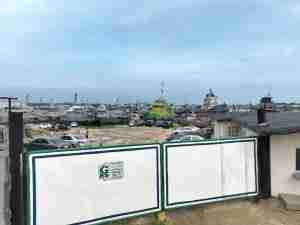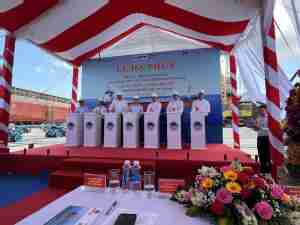The Middle East and Mediterranean is dotted with a host of seaports, all competing for steamship lines coming from China and India.
Mediterranean European ports have always faced tough competition with the ports of Northern Europe, which handle the bulk of Europe's cargo due to their close proximity to Western Europe's most dense and wealthiest population and excellent hinterland connections.
Med ports, however, have the advantage in capturing cargoes passing through the Suez Canal. A ship calling on a Med European port saves five to eight days sailing time versus calling on Northern European seaports.
The problem has been disjointed road and rail connections in Spain and Italy, and poor port management. While infrastructure improvements are underway, issues still remain. Italy alone has 27 large-scale seaports, 23 of which are managed by port authorities. Approximately 400 million tons of goods pass through these ports each year.
Yet many of these ports are mismanaged and battle each other for cargoes. Italian seaports also have a reputation for delays. As a result, container traffic at Italian seaports was virtually static last year with some experiencing a downturn in throughput.
Steamship lines have also been shuffling their rotations, pulling service out of certain ports and shifting to others.
Italy's Port of Genoa
In what was regarded as a significant move in its battle to retain its status at Genoa's Voltri facility, last year the Grand Alliance (P&O Nedlloyd, Hapag-Lloyd, NYK, OOCL and MISC) shifted its port rotation to PSA Sinport's Voltri Terminal Europe (VTE) from Eckelmann Eurogate group's Contship Italia SpA. Consequently, some 250,000 teus/year of moves that were handled over MCT Gioia Tauro, CICT Cagliari and LSCT La Spezia are now being handled by VTE in Genoa.
Meanwhile, VTE is set to expand its new berth (Modele VI) by 160,000 square meters and add an additional 300 meters of berthing line. The project has been under dispute between PSA Sinport, the terminal operator, and Contship Italia. All that aside, port operator PSA International is committed to invest in and grow VTE. In the last two months, VTE took delivery of two new quay cranes, thereby bringing the number of quay cranes at the port to 10. The new cranes are 'low profile cranes' capable of handling vessels up to 18 rows across. They are also capable of twin-lift operations. VTE also has an option on two additional cranes, which can be ordered to meet potential increases in throughput. The terminal handled a total of nearly 900,000 teus in 2005.
Other port news
While the Grand Alliance's departure from the Port of La Spezia was a big hit for the port, in January 2006 it obtained a new service operated by Yang Ming. The 3,918 teu Yang Ming Yantian containership is part of the CKYK alliance formed by Yang Ming, Coscon, Hanjin Shipping and "K" Line. Yang Ming Line has not called on La Spezia in 18 years.
Meanwhile, the Port of Trieste on Italy's Adriatic Coast, received late last year two new post-Panamax container cranes at its Molo VII, run by Trieste International Maritime Terminal (TIMT). The cranes are capable of reaching 16 rows across and can handle two 20 foot boxes thanks to their twin-lift and a retractable spreader, boasting a top lift of 45 tons.
The Port of Trieste specializes in intermodal traffic (container and ro-ro), besides offering many facilities for conventional traffic. Trieste, thanks to its deep sea that enables the berthing of huge ships, offers an excellent system of rail and road junctions which links it with the European network. The port is bidding to become an important gateway for containerized traffic between the Far East and European markets.
The Port of Trieste is one of the Italian ports with the greatest covered warehousing capacity (500,000 square meters) located on 12 commercial terminals.
Gioia Tauro's position as a leading Med port is being compromised by delays in deepening its chann










